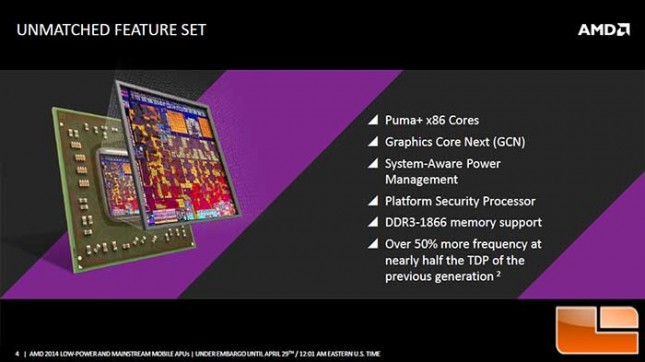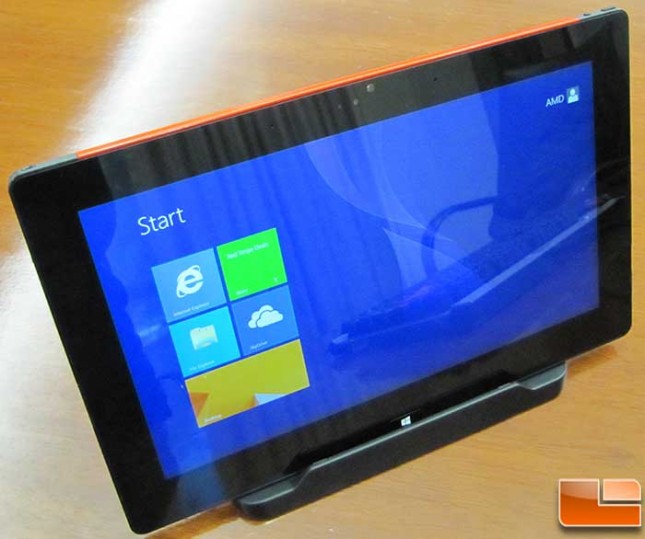AMD Beema and Mullins APU Performance – 3rd Generation APUs
Final Thoughts and Conclusions
It was nice of AMD to provide us some private hand-on time with their Mullins based Discovery tablets. While AMD is not going to get into the manufacturing of tablets, they did design and develop the tablets in house. Once Mullins is released you can expect to see different manufacturers release tablets in various sizes and features.

The Mullins APU supports every feature you can want in a tablet. From external storage solutions which include SuperSpeed USB 3.0 to Micro-SDHC cards. Networking is also a breeze as it can support all the modern WIFI types, including AC; not to forget cellular broadband, it can support that as well. These options will be determined by the manufacturers and not AMD. Due to various agreements, AMD was unable to provide a list of which manufacturers are planning on implementing Beema and Mullins APU into their lineup, however Lenovo jumped the gun and has already announced several systems based on Beema. Likewise, AMD wasn’t able to provide an estimation of the cost for Mullins based tablets, again stating that will be determined by the manufacturers.
In our limited time with the AMD Discovery tablets, we were impressed by how they ran. Having experience with high end Intel i5 tablets from Lenovo (such as the Lenovo Helix), these can not compare in performance; that’s not the target audience either. Looking at the Atom based tablets, the Mullins APU seems to outperform them on every level; this is the target audience that AMD is aiming for. Applications started fairly quick, web browsing was mostly smooth and video playback did not cause any issues.
 While we said that web browsing was mostly smooth, we did run into one situation that it did not perform as expected. When streaming 1080p content from YouTube and we ran into problems. While the video would be fully buffered, it would skip frames and have severe stuttering. When we talked to AMD about this, their response was the video driver had a flaw that was being actively worked on. On the other hand, in another room, AMD had a movie playing off the tablet onto a big screen, running at 1920×1080 and there was no stuttering or issues, just a flawless experience.
While we said that web browsing was mostly smooth, we did run into one situation that it did not perform as expected. When streaming 1080p content from YouTube and we ran into problems. While the video would be fully buffered, it would skip frames and have severe stuttering. When we talked to AMD about this, their response was the video driver had a flaw that was being actively worked on. On the other hand, in another room, AMD had a movie playing off the tablet onto a big screen, running at 1920×1080 and there was no stuttering or issues, just a flawless experience.
If you want to use a tablet for gaming, the Mullins APU looks to have enough power to provide a good casual experience. When testing Dirt Showdown, we ran it at its maximum resolution of 1920×1080, and all settings on low. It’s FPS was pretty low averaging around 16FPS in the benchmark; this really isn’t a playable framerate. Lowering the resolution would resolve this while keeping the graphics nice and crisp. Do we really need to play a game at 1080p resolution on a 10″ or smaller tablet? I personally don’t think so, 720p should be sufficient, however as time ran short we were not able to retest Dirt Showdown at the lower resolution.
Legit Bottom Line: While Beema and Mullins based hardware is still several months away, if a low powered system works within your environment, these new APU’s are worth taking a look at. For those that demand the highest level of performance in a tablet, expect to pay a significant amount more for an Intel i5 tablet.
